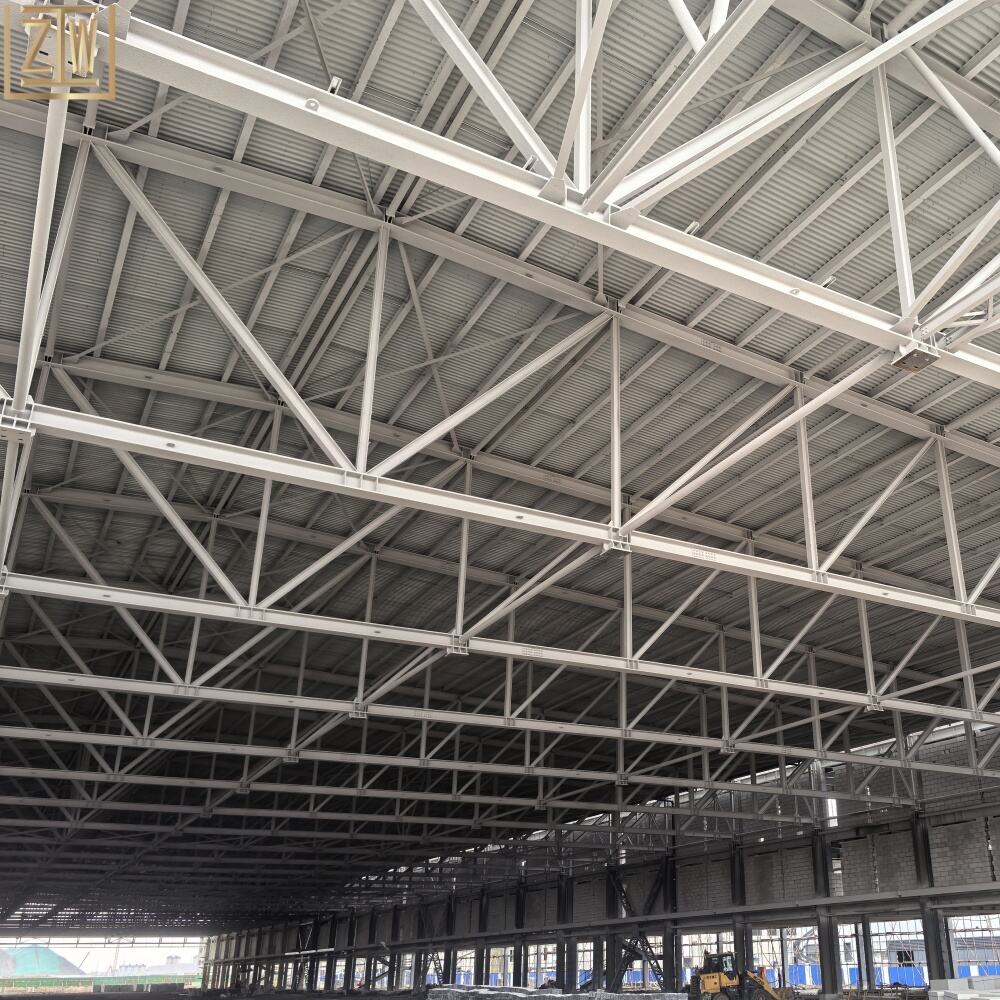In the dynamic and ever - evolving realm of aviation, where technological advancements and increasing travel demands reshape the industry daily, hangars stand as an often - overlooked yet indispensable component. Behind every seamless take - off and safe landing lies the crucial contribution of these large structures. Hangars are far more than mere shelters for aircraft; they are the linchpin of modern airports and airlines, underpinning the entire aviation ecosystem. This article delves deep into the multifaceted role of hangars, exploring their functionality, design intricacies, economic significance, emerging trends, and future prospects within the aviation infrastructure.
Understanding the Functionality of Hangars
At the heart of their purpose, hangars serve as protective havens for aircraft, shielding them from the harsh elements of nature. Intense sunlight can cause the paint and materials of an aircraft to degrade over time, while strong winds, heavy snow, and torrential rain pose risks to the structural integrity and operational readiness of these costly machines. A well - equipped hangar provides a controlled environment where a wide range of aircraft maintenance activities can take place without disruptions.
Inside a modern hangar, routine inspections, minor repairs, and even major overhauls are carried out with precision. Specialized tools and equipment, such as hydraulic lifts, engine hoists, and non - destructive testing devices, are strategically placed to facilitate efficient maintenance. Skilled technicians, mechanics, and engineers work in harmony within the hangar, ensuring that each task is completed promptly and accurately. For instance, a commercial airliner undergoing a routine check - up in a state - of - the - art hangar can be back in service within a fraction of the time it would take if exposed to the elements. This rapid turnaround time not only maximizes the utilization of aircraft but also enhances passenger trust and satisfaction, as on - time departures and arrivals become the norm.
Design Considerations for Modern Hangars
The design of modern hangars has undergone a remarkable transformation since the early days of aviation. Today's hangars are engineered to accommodate a diverse fleet of aircraft, ranging from small single - engine planes to massive wide - body jets like the Airbus A380 or Boeing 747. To meet this challenge, architects and engineers focus on creating flexible interior spaces. Moveable partitions, adjustable ceiling heights, and modular flooring systems allow hangars to be reconfigured quickly to suit the specific requirements of different aircraft.
In addition to flexibility, sustainability has become a key design consideration. Many modern hangars incorporate energy - efficient features, such as solar - powered lighting systems, smart thermostats, and high - performance insulation. For example, some large international airport hangars have installed solar panels on their roofs, which can generate a significant portion of the electricity needed for operations. LED lighting fixtures, known for their long lifespan and low energy consumption, are also widely used. These eco - friendly design elements not only reduce the environmental impact of hangars but also lead to substantial cost savings for airport operators and airlines over the long term.
The Economic Impact of Hangars on Aviation
Hangars play a pivotal role in driving the economic growth of the aviation industry. Each hangar facility acts as a job creator, generating employment opportunities across various sectors. Mechanics, technicians, engineers, administrative staff, and security personnel all find gainful employment within hangar operations. The presence of a well - maintained hangar also attracts airlines and aviation service providers to an airport, leading to increased air traffic and passenger numbers.
Airlines that invest in modern, efficient hangars reap significant financial benefits. By ensuring that their aircraft receive timely and high - quality maintenance, airlines can reduce the incidence of flight delays and cancellations. This, in turn, enhances their reputation among travelers, leading to increased customer loyalty and higher ticket sales. For example, a major airline that upgraded its hangar facilities saw a 15% reduction in aircraft downtime, resulting in millions of dollars in additional revenue each year. Moreover, well - equipped hangars can attract third - party maintenance, repair, and overhaul (MRO) services, further boosting the local economy.
Trends in Hangar Development
The aviation industry's continuous growth is fueling several trends in hangar development. One of the most prominent trends is the adoption of modular construction techniques. Modular hangars are built off - site in sections and then assembled quickly at the airport, reducing construction time and costs. This approach also allows for easy expansion or modification of hangar facilities as the needs of airlines and airports change.
The rise of electric and hybrid aircraft is another trend shaping hangar design. These new - generation aircraft require specialized charging infrastructure and maintenance procedures. As a result, architects and engineers are incorporating dedicated charging pads, battery - testing equipment, and training facilities into hangar designs. Additionally, the growing emphasis on sustainability is driving the use of recycled and low - impact materials in hangar construction, as well as the implementation of waste - reduction and recycling programs within hangar operations.
The Future of Hangars in Aviation Infrastructure
Looking to the future, the role of hangars in aviation infrastructure is set to become even more critical. With the projected increase in air travel demand and the development of innovative aircraft technologies, such as supersonic jets and vertical take - off and landing (VTOL) vehicles, there will be a heightened need for hangars that can accommodate these new types of aircraft.
Airports and aviation stakeholders must invest in research and development to ensure that hangars are equipped with the latest technologies and meet the evolving safety and efficiency standards. Advanced automation and robotics may be integrated into hangar operations to streamline maintenance processes and improve productivity. Furthermore, as the aviation industry continues to strive for greater sustainability, hangars will need to lead the way in adopting green building practices and renewable energy solutions.
In conclusion, hangars are the unsung heroes of modern aviation infrastructure. Their functionality, design, economic impact, and evolving trends all contribute to the smooth operation and growth of the aviation industry. As the skies become busier and aircraft technology advances, hangars will continue to adapt and innovate, ensuring that they remain at the forefront of aviation infrastructure, enabling safe, efficient, and sustainable air travel for years to come.


